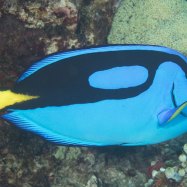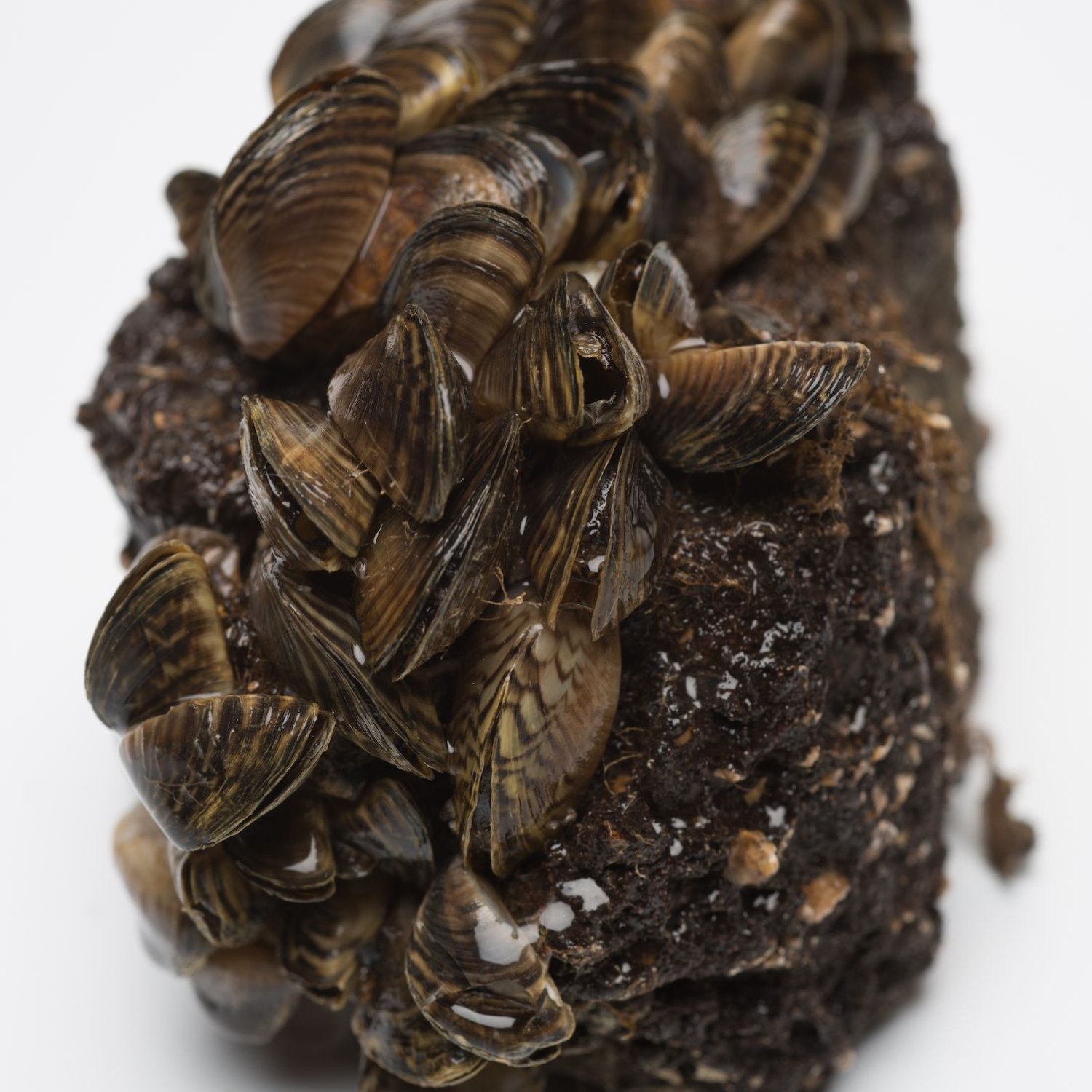
Zebra Mussels
Approximately 1-2 inches (2.5-5 cm)
Did you know that Zebra Mussels, named for their distinctive striped appearance, are only about 1-2 inches in length and are commonly found in lakes, rivers, and streams? These small, elongated creatures belong to the family Dreissenidae and have a triangular body shape. Keep an eye out for these invasive species when enjoying water activities! #ZebraMussels #InvasiveSpecies #WaterActivities
Animal Details Summary:
Common Name: Zebra Mussels
Kingdom: Animalia
Habitat: Freshwater
The Intriguing World of Zebra Mussels: From Russia to the Shores of North America
Nestled within the murky depths of freshwater lakes, rivers, and streams, exists a tiny yet formidable creature – the zebra mussel. With its dark and light striped pattern, small elongated body, and triangular shape, the zebra mussel may seem unassuming at first glance. However, upon closer inspection, this small mollusk holds a fascinating story of its own.Scientifically known as Dreissena polymorpha, the zebra mussel also goes by the same name in common parlance Zebra Mussels. Belonging to the animal kingdom and Mollusca phylum, zebra mussels fall under the Bivalvia class, Veneroida order, and Dreissenidae family. This tiny filter-feeder, native to Russia, has gained notoriety for its rapid spread across North America, Europe, and Asia, causing significant ecological and economic impacts.
Zebra mussels can be found in various freshwater habitats, including lakes, rivers, and streams. But how did this small mollusk, native to Russia, make its way to other parts of the world, and what makes it such a successful invader? Let's delve deeper into the intriguing world of zebra mussels to find out.
From Russia to the Shores of North America
Native to the Caspian and Black Sea basins in Russia, zebra mussels were first discovered by a German zoologist, Friedrich Heinrich Wilhelm Martens, in 1769. However, they didn't gain worldwide attention until the late 1980s when they were found in the Great Lakes region of North America. Their arrival in the Great Lakes via the ballast water of ships from Europe raised significant concerns among scientists and environmentalists.Naturally, zebra mussels can spread through freshwater systems by attaching to fish and other aquatic animals. However, the introduction of this species into the Great Lakes through ballast water provided a quick and efficient way to spread to other parts of the continent Zebra Pleco. Once in a new habitat, zebra mussels reproduce at an alarming rate, creating dense clusters that can quickly take over the ecosystem.
Rapid Reproduction and Spread
The reproductive abilities of zebra mussels are what make them such a successful invader. Females can produce up to 40,000 eggs in a breeding season, which can hatch within three days. However, the males don't lag far behind in terms of numbers, with each one being able to release a million sperm into the water.This rapid reproduction leads to the formation of dense clusters that can cover large surfaces, including rocks, plants, and other aquatic animals. Zebra mussels also have a unique byssus gland, which secretes a strong adhesive that helps them attach to surfaces firmly. This adhesive is so strong that zebra mussels can withstand strong currents, making it challenging to remove them once established.
Impact on Ecosystems
Zebra mussels have had a significant impact on the ecosystems they have invaded, both environmentally and economically. One of the most notable impacts is their ability to filter large amounts of water. These tiny mussels can filter up to one liter of water per day, removing small particles and nutrients, which can have both positive and negative effects.On the positive side, this filtration can improve water clarity, making it easier for plants to grow. However, the removal of nutrients can also lead to a depletion of food sources for other aquatic animals, disrupting the natural food chain. This effect is particularly damaging to native species that are unable to adapt to the sudden changes in their habitat.
Economic Implications
Zebra mussels have also had significant economic implications in the areas they have invaded. The dense clusters formed by these mussels can clog water intake pipes for power plants and industrial facilities, leading to a decrease in efficiency and increased maintenance costs. They can also attach to and damage boats, docks, and other structures, resulting in significant financial losses.In addition, the increased water clarity caused by zebra mussel filtration can lead to the growth of toxic algae blooms, which can harm people, pets, and livestock. This can have a domino effect on industries such as fishing, tourism, and water recreation, causing further economic damage.
Controlling the Spread of Zebra Mussels
Efforts have been made to control the spread of zebra mussels in invaded areas, but it has proved to be a challenging task. Chemical and biological methods, such as using pesticides and introducing predators, have been explored but have not been successful in eradicating them completely.The most effective method to control the spread of zebra mussels is through public education and awareness. Watercraft inspection programs have been implemented to prevent the unintentional transportation of zebra mussels to new habitats. Boaters are advised to clean and dry their boats and equipment before and after entering bodies of water to limit the spread of zebra mussels.
Benefits of Using AI for Zebra Mussel Management
In recent years, artificial intelligence (AI) has been increasingly used to manage zebra mussel invasions and minimize their impact on ecosystems. AI models have been developed to predict the spread of zebra mussels in different bodies of water, helping to identify high-risk areas and target efforts for mitigation.Furthermore, AI-based solutions are being developed to detect zebra mussels and their characteristic byssus gland secretion, allowing for early detection and effective management. These solutions help to monitor waterways continuously, reducing the risk of zebra mussel invasions being unnoticed.
The Future of Zebra Mussel Management
The spread of zebra mussels may seem like a daunting challenge, but it has also brought about positive changes. Scientists have been able to learn more about these tiny invaders and their impact on ecosystems. This knowledge is being used to develop better management strategies to control their spread and mitigate their impact.AI technology is also playing a significant role in zebra mussel management, providing more efficient and innovative ways to monitor and control their spread. With constant advancements in technology and increased awareness, it is possible to contain the spread of zebra mussels and protect our freshwater ecosystems.
In Conclusion
The introduction of zebra mussels into new habitats has had significant consequences for freshwater ecosystems and the economy. Through their rapid reproduction and unique abilities, these tiny invaders have taken over lakes, rivers, and streams, disrupting the natural balance of these ecosystems.However, with awareness and effective management strategies, we can limit the spread of zebra mussels and reduce their impact. The use of AI technology provides hope for more efficient and effective management in the future, aiding in the protection of our freshwater ecosystems. Let's work towards a more sustainable future, where the invasion of species like the zebra mussel is prevented and managed in a timely and responsible manner.

Zebra Mussels
Animal Details Zebra Mussels - Scientific Name: Dreissena polymorpha
- Category: Animals Z
- Scientific Name: Dreissena polymorpha
- Common Name: Zebra Mussels
- Kingdom: Animalia
- Phylum: Mollusca
- Class: Bivalvia
- Order: Veneroida
- Family: Dreissenidae
- Habitat: Freshwater
- Feeding Method: Filter Feeder
- Geographical Distribution: North America, Europe, Asia
- Country of Origin: Russia
- Location: Lakes, rivers, and streams
- Animal Coloration: Dark and light striped pattern
- Body Shape: Small, elongated, and triangular
- Length: Approximately 1-2 inches (2.5-5 cm)
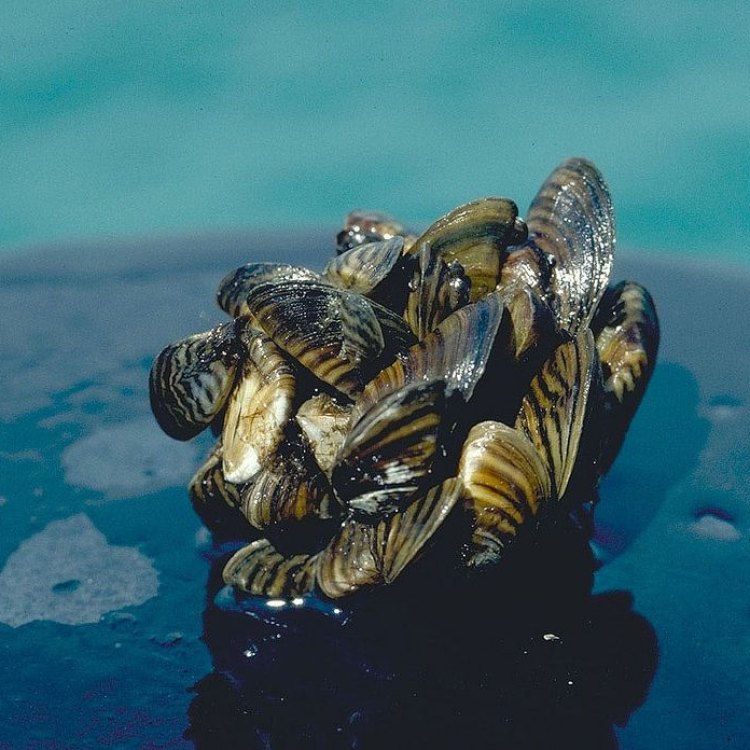
Zebra Mussels
- Adult Size: Up to 2 inches (5 cm)
- Average Lifespan: 3-5 years
- Reproduction: Sexual
- Reproductive Behavior: Females release eggs and males release sperm into the water for external fertilization
- Sound or Call: No sound or call
- Migration Pattern: Non-migratory
- Social Groups: Large aggregations known as colonies
- Behavior: Attach to hard surfaces, such as rocks, docks, and boats
- Threats: Can clog water intake structures, outcompete native species, and alter ecosystems
- Conservation Status: Not evaluated
- Impact on Ecosystem: Can negatively impact native species and alter the food web
- Human Use: None
- Distinctive Features: Distinctive dark and light striped pattern
- Interesting Facts: Zebra mussels are highly invasive and have been introduced to various parts of the world unintentionally
- Predator: Few natural predators
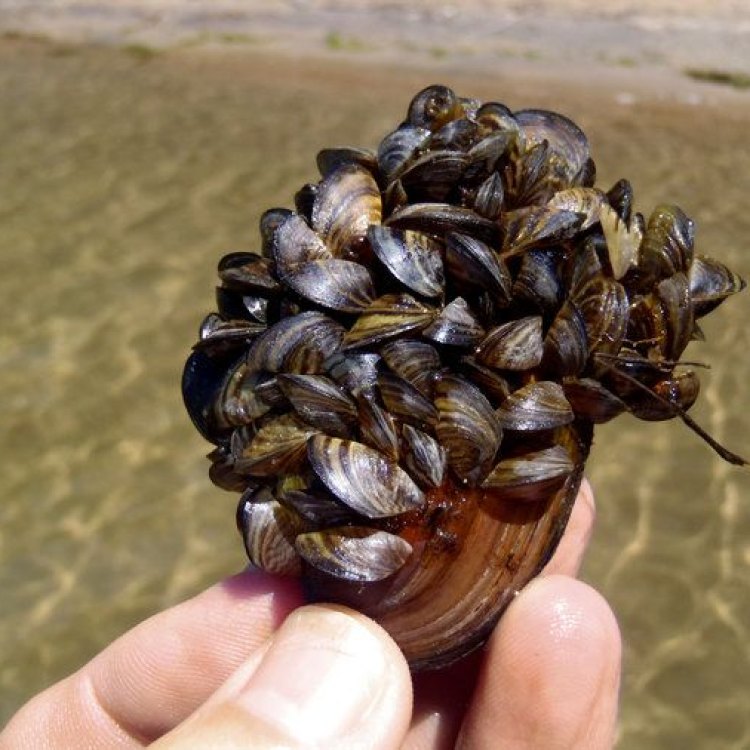
Dreissena polymorpha
Zebra Mussels: The Invasive Colonizers of Our Waterways
When we think of invasive species, our minds may immediately jump to images of giant snakes in the Everglades or swarms of fire ants in the southern United States. But there is one invasive species that often goes unnoticed, yet has a significant impact on our waterways: the zebra mussel.Growing up to 2 inches (5 cm) in length and with an average lifespan of 3-5 years, these small, striped mollusks may seem harmless at first glance. But beneath their unassuming appearance lies a highly invasive and destructive nature PeaceOfAnimals.Com.
In this article, we will delve into the unique features and behaviors of zebra mussels, their impact on the ecosystems they invade, and the efforts being made to control and prevent their spread.
The Basics: Size, Reproduction, and Behavior
Adult zebra mussels can reach a size of up to 2 inches (5 cm) and have a distinctive dark and light striped pattern, hence their name. This pattern serves as camouflage, allowing them to blend in with their surroundings and evade predators.As for reproduction, zebra mussels engage in sexual reproduction, with females releasing eggs and males releasing sperm into the water for external fertilization. This method of reproduction allows for quick and abundant reproduction, with a single female able to produce up to 1 million eggs in a single spawning season.
When it comes to their behavior, zebra mussels are non-migratory and live in large colonies, attaching themselves to hard surfaces such as rocks, docks, and boats. This behavior makes them efficient colonizers, able to spread quickly and establish themselves in new environments.
Threats and Disturbances
While they may seem harmless, zebra mussels pose a significant threat to our waterways. One of the biggest threats is their ability to clog water intake structures, such as those used for drinking water or power plants Zebra Snake.Their sheer numbers and ability to attach themselves to surfaces make them especially efficient at blocking water flow, causing damage to infrastructure and increasing maintenance costs.
Furthermore, zebra mussels are known to outcompete native species for resources and alter ecosystems. For example, in the Great Lakes region, the introduction of zebra mussels has caused a decline in native mussel populations and has altered the food web, leading to changes in the fish communities.
Unintended Introductions and Invasive Spread
One of the most concerning aspects of zebra mussels is their ability to be unintentionally introduced to new environments. Due to their small size and ability to attach to surfaces, they can be easily transported by boats, trailers, or even on recreational equipment.Once introduced to a new waterway, zebra mussels spread quickly, taking over the area and causing widespread damage. As they have no natural predators in these new environments, their population can grow rapidly, making it challenging to control and eradicate them.
The Battle Against Zebra Mussels
Efforts to control and prevent the spread of zebra mussels have been ongoing for decades. These efforts include initiatives such as educating the public about the dangers of unintentional introductions and implementing strict regulations for boaters to prevent the transport of zebra mussels.In some cases, physical removal methods, such as scraping and power washing, have been used to restrain their population growth. However, these methods can be costly and have limited effectiveness.
Another approach is the use of chemical treatments, such as copper-based compounds, to kill zebra mussels. While effective, these treatments can also have negative impacts on other aquatic life.
The Cost of Inaction
Despite these efforts, zebra mussels continue to spread and cause significant damage to our waterways. The economic impact of their invasion is estimated to be in the billions of dollars, with losses incurred from increased maintenance costs and damage to infrastructure.The ecological impact is also concerning, as zebra mussels can disrupt entire ecosystems, leading to declines in native species and changes in the food web. This can have far-reaching consequences on the entire ecosystem and its ability to function properly.
Conclusion: A Call for Action
The invasion of zebra mussels is a serious threat to the health and stability of our waterways. Their ability to spread quickly and cause significant damage highlights the need for action to prevent their further spread and control their population.It is essential for all of us, as individuals and as a society, to take responsibility and do our part in preventing the unintentional introduction of zebra mussels. By following proper boating protocols and being educated about the issue, we can help stop the spread of these invasive organisms.
Additionally, support for research and the implementation of effective control methods is necessary to mitigate the damage caused by zebra mussels and protect our waterways for future generations. Let us not wait until it is too late to act against this invasive and destructive species.
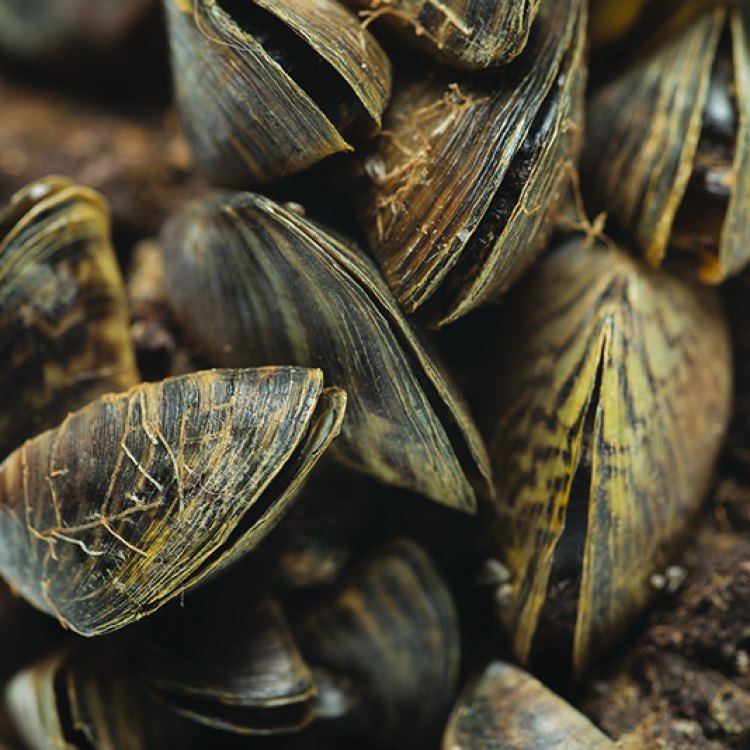
The Intriguing World of Zebra Mussels: From Russia to the Shores of North America
Disclaimer: The content provided is for informational purposes only. We cannot guarantee the accuracy of the information on this page 100%. All information provided here may change without prior notice.





